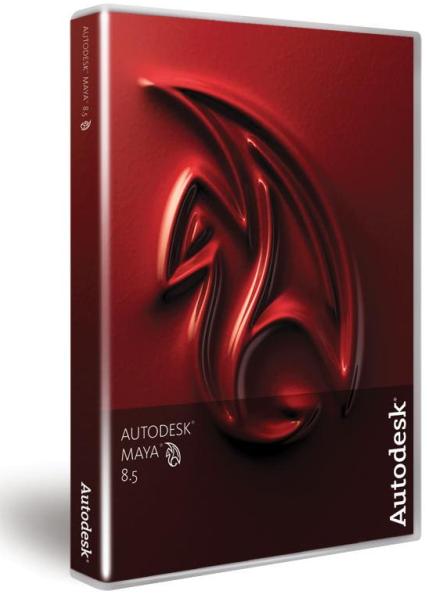Maya Complete and Unlimited 2008 Portable
Maya® Complete and Unlimited integrates the world’s foremost modeling, animation, visual effects, and advanced rendering technologies into one complete workflow solution. That’s why film and video artists, game developers, visualization professionals, Web and print designers and —3D enthusiasts everywhere— turn to Maya to take their work to the next level.
Features
Create breathtaking 3D content with Autodesk® Maya® 8 software. With Maya 8, Autodesk demonstrates its commitment to meeting the demands of next-generation productions. The new release addresses the fundamental challenges Maya customers are facing today–and those they expect to face in the future.
Performance
Maya 8 has been optimized to provide superior performance across many areas of the software, both through algorithmic speedups and scalable multi-threading to take advantage of the latest generation of workstations.
Transfer Polygon Attributes
A new Transfer Polygon Attributes feature allows you to transfer UV, color per vertex (CPV) and vertex position information between surface meshes of differing topologies. This proves particularly useful when working with two different versions of an object/character (e.g., one high resolution and one low resolution). You could then transfer existing UV sets that have already been laid out to the lower resolution model. The feature also lets you create a “shrink-wrap” effect as they transfer vertex positions from one model to another.
Streamlined New Polygon Tools and Workflows
New and improved tools such as polygon bridge, multiple edge loop insertion, and enhanced UV layout, and new workflows, such as the ability to interactively create, position, and scale primitives in a single operation, maximize productivity for the most common tasks.
Mental ray 3.5 Core
Maya now uses the mental ray® 3.5 rendering core which has been optimized for superior performance and memory usage.
Geometry Caching
You can now cache deformations on polygon, NURBS (including curves) and subdivision surface geometry, allowing for faster playback and rendering of scenes. Caches can be edited and blended in the Trax Editor, letting you blend the results of various vertex animations together in order to form a new animation: for example, you could correct deformations by remodeling and replacing particular frames and then smoothly blend in and out of the changes.
Override Viewport with Renderer of Choice
You now have the option of overriding the Maya viewports with a proprietary or third-party plug-in renderer. This will enable you to review your scene as it will appear in the target renderer–such as a game engine–while maintaining the ability to interact with the scene in the interactive view. Two example Windows® plug-ins are provided with the Maya Devkit: one for OpenGL® and one for Direct3D® drivers.
Toxik Interoperability
New as of Maya 8, information about a Maya scene can be exported to Autodesk® Toxik™ collaboration software thereby greatly improving the workflow between the two packages. A Toxik composition can be generated from within Maya based on the render layers in the scene. The exported compositing graph includes the associated image sequence filenames, Maya blend modes, and specific render settings. Iterative updates on composition elements can be created and passed to the Toxik application, enabling you to collaborate on specific elements without starting over each time. Additionally, multiple versions of a composition can be kept for comparison and changes can be easily reverted at any time.



